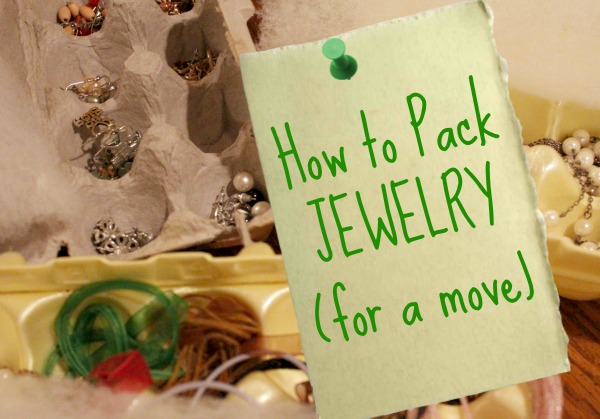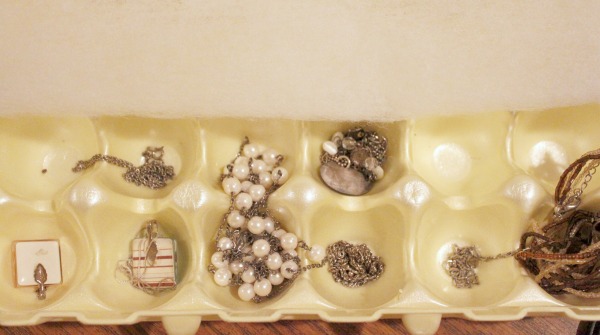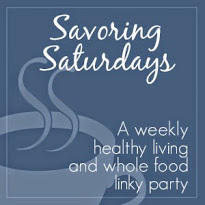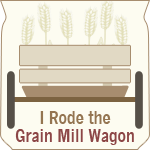 Welcome back to our Raising Healthy Families series! Each week, we’ll bring you another great post with a tip for helping you raise your families healthfully in this not-very-healthy world.
Welcome back to our Raising Healthy Families series! Each week, we’ll bring you another great post with a tip for helping you raise your families healthfully in this not-very-healthy world.
Today’s post is brought to you by yours truly!
Once I got serious about removing chemicals from my diet, I began to realize that I was ingesting and consuming even more chemicals (and potentially more dangerous ones) via the personal care products I used on a regular basis. After experimenting with a variety of toiletry options in a trial-and-error fashion over the past few years, I’ve settled on a simple but healthy hygiene routine for myself and The Boys.
Simple & Healthy Hygiene
One thing you need to understand about me: I like to keep things simple! I decided after a while that fussing around with concocting my own products made with special-order ingredients was definitely not for me. While I certainly love for all my hygiene items to be healthy and inexpensive, I don’t want to waste a lot of time and effort in mixing them up on a regular basis. So I pretty much only make toiletries if they use one or two ingredients; otherwise I’ve found some affordable brands to purchase that I trust and can recommend. I have a great deal of respect and admiration for anyone who makes their own toiletries for their family, but I’ve decided for myself that I prefer to spend my time on other things.
If you, too, want to provide healthy hygiene products for your family but don’t have a lot of time or desire to mess around with making your own, here are my recommendations!
Toothpaste
Although regular toothpaste gets a great score from EWG’s Skin Deep Guide, I choose to avoid fluoride, which eliminates almost all mainstream toothpaste products. I also prefer toothpaste that is made largely of natural ingredients rather than chemicals.
Some people suggest just brushing with baking powder, but others say that it’s way too abrasive for the enamel on your teeth. I say it’s disgusting, so I haven’t even tried it! Instead, I buy Trader Joe’s AntiPlaque Toothpaste, which is all natural and contains no fluoride. It contains the oils fennel, myrrh and peppermint for delicious flavor and a healthy mouth. It’s also very affordable, which is my favorite part! If you don’t have a Trader Joe’s close by (how sad!), many of my friends recommend Earthpaste. It’s rather pricey, though, at $7.99 a pop, so if that’s too much for you, try the widely available natural toothpaste options like Tom’s of Maine (which does have sodium lauryl sulfate).
Soap
Once again, I turn to Trader Joe’s for an affordable but natural healthy option. We lather up with their Honey Oat Soap, which costs less than $2 for 2 bars, but they also have a Lavender variety.
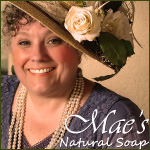
If you don’t have Trader Joe’s, thankfully, I recently discovered a wonderful homemade soap entrepreneur that I am thrilled to recommend. Mae’s Natural Soap is handmade in small batches with the healthiest and best ingredients. Each bar costs just under $5, and the quality is totally worth it! Recently, Mae’s husband suddenly and unexpectedly passed away, and she is endeavoring to support her family with her soap-making business. {Stay tuned, because some bloggy friends and I will be bringing you an awesome giveaway of her soaps!}
Lotion
Lotion has been a tricky one for me, to be honest. Many people recommend straight coconut oil as a moisturizer, but I find it to be greasy and not super effective, personally. However, it’s definitely worth a try because you can’t get any simpler or more natural than that!
I’m currently working through a bottle of semi-natural lotion that someone gave me, but when I’m done with it, I’m going to be using “hard lotion” instead. Hard lotion comes in a bar (like soap) and rubs on to your skin to moisturize, and is made with all natural ingredients. MadeOn Lotion is a popular brand with reasonable prices - you can get a 3-pack (family lotion bar, pocket-size lotion bar, and lip balm) for just over $20. You can purchase 2 family-size refills for only $15, and 2 pocket refills for $9. I love that these lotions are made exclusively with shea butter, beeswax, and coconut oil. Good stuff there!
Shampoo
Shampoo is another tricky one for me, and I’ve done a lot of experimentation with different types of shampoo and methods of hair cleaning. It’s very important, though, to find a safe alternative because conventional shampoo is filled with chemicals.
There’s the ever-popular “No Poo” method, which is super simple and effective for most people. All you need is baking soda and apple cider vinegar: put a tablespoon of baking soda in a cup of water, and then put a tablespoon of apple cider vinegar in a cup of water. Wash with the baking soda mixture, rinse and then follow up with the vinegar mixture. After a few weeks (or maybe a month or two) of transition, your hair will be just as clean as if you used shampoo, and you’ll find you can go much longer between hair-cleaning sessions! I also found that my hair was a lot fuller and held a style a lot better when I cleaned with this method.
However, my hair really dried out after using baking soda and vinegar for 5-6 months. I’m guessing I could have tweaked my routine a little to accommodate that, but I decided I didn’t want to fuss with it anymore. Instead I use Kiss My Face Miss Treated shampoo and conditioner and L-O-V-E it. It’s expensive at regular price (around $8, depending on the store), but they often have coupons available (sign up for their newsletter); when combined with deals, I’m usually able to get a bottle for $4.
Deodorant
I’m going to tell you a little secret: I don’t wear deodorant every day. I can always tell when my diet is bad because then my BO is bad, too. (TMI, I know. Sorry.) And that’s when I need deodorant. But when my diet is healthy and I’m not doing any strenuous work, I don’t have a need for deodorant.
But when I do, I don’t want to use deodorant made with aluminum, which has been linked to Alzheimer’s disease. That’s enough to scare me away from it, so I concentrate on using aluminum-free deodorant when I do need it. Tom’s of Maine is a deodorant I’ve used on occasion, and it gets a low score of “1” from EWG. However, it still has ingredients that concern me, so I’m happy I’ve recently found an alternative with Lexie Naturals. Lexie:Deo is made with sodium bicarbonate, beeswax, shea butter, coconut oil, and essential oil (tea tree and lavender). A 2.25oz tube is $6.50, which is a couple dollars more than the average deodorant at the grocery store, but significantly better for you and your health!



